
JOURNAL OF ORNITHOLOGY
Scope & Guideline
Advancing Knowledge in Bird Conservation
Introduction
Aims and Scopes
- Avian Ecology and Behavior:
Research on the ecological interactions and behavioral patterns of birds, including nesting habits, foraging strategies, and social dynamics. - Conservation Biology:
Studies addressing the conservation status of bird species, habitat restoration, and the impact of environmental changes on avian populations. - Migration and Movement Patterns:
Investigations into the migratory routes, timing, and strategies of various bird species, with a focus on the effects of climate and habitat on migratory behavior. - Physiological and Morphological Studies:
Research exploring the physiological adaptations of birds to their environments, including studies on plumage coloration, body condition, and reproductive strategies. - Citizen Science and Monitoring:
Utilization of citizen science data and monitoring schemes to assess bird populations, distribution changes, and community engagement in ornithological research. - Evolutionary Biology and Phylogeography:
Exploration of the evolutionary relationships among bird species, including studies on genetic diversity, hybridization, and historical biogeography.
Trending and Emerging
- Climate Change Impacts on Birds:
An increasing number of studies explore the effects of climate change on bird distribution, breeding success, and migratory behavior, highlighting the urgency of understanding these impacts. - Citizen Science Contributions:
There is a growing trend in utilizing citizen science data to enhance research quality and public engagement, indicating a shift towards collaborative approaches in ornithology. - Behavioral Ecology in Urban Environments:
Research focusing on how urbanization affects bird behavior and ecology is on the rise, addressing the challenges birds face in increasingly human-dominated landscapes. - Physiological Responses to Environmental Stressors:
Emerging studies examine how environmental stresses, such as pollution and habitat loss, influence physiological traits and health in bird populations. - Conservation Genetics and Genomics:
An increase in studies utilizing genetic tools to inform conservation strategies reflects a trend towards integrating genomic data into avian conservation efforts.
Declining or Waning
- Historical Avian Fossil Studies:
Research on ancient avian fossils has decreased, possibly due to a shift towards more contemporary ecological and conservation issues. - Urban Ecology of Non-native Species:
Studies focused on the urban ecology of invasive bird species have become less frequent, indicating a potential shift towards more native-focused research. - Traditional Taxonomy and Systematics:
There appears to be a waning interest in classical taxonomy and systematics in favor of molecular and genetic approaches to avian classification.
Similar Journals

MALIMBUS
Fostering collaboration for the preservation of avian diversity.MALIMBUS is a peer-reviewed journal published by the West African Ornithological Society, focusing on the study of avian biology and conservation. It aims to disseminate important research findings that contribute to the understanding of bird species, their habitats, and the challenges they face across West Africa and beyond. Although currently not available in an open-access format, the journal is an invaluable resource for ornithologists, ecologists, and industry professionals keen on advancing their understanding of avian science. Those engaged in research on bird migration, breeding behaviors, and conservation strategies will find MALIMBUS to be a vital platform for sharing innovative ideas and fostering collaborations. With its commitment to quality and rigorous review processes, MALIMBUS is an essential reference for anyone dedicated to studying and preserving avian diversity.
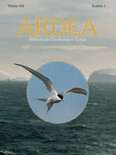
ARDEA
Elevating the study of birds with impactful insights.ARDEA, published by the Nederlandse Ornithologische Unie, is a prominent journal in the fields of Animal Science, Zoology, and Ecology. With its rich history spanning from 1981 to the present, ARDEA serves as a vital platform for researchers and professionals dedicated to avian studies and the ecological sciences. This quarterly journal is recognized in the Q3 category for both Animal Science and Ecology, as per the latest rankings, and maintains an impressive global standing within its subject areas. Although it operates without an open access model, the journal provides significant insights and contributions to the understanding of bird biology, conservation, and evolution. Researchers and students seeking to advance their knowledge in ornithology and related fields will find ARDEA to be an indispensable resource, promoting high-quality research and fostering academic collaboration.
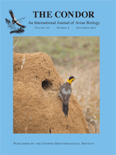
Ornithological Applications
Elevating ornithology through cutting-edge research and insights.Ornithological Applications, published by Oxford University Press, is a premier academic journal dedicated to advancing the field of ornithology through innovative research and practical applications. With an impressive impact factor and recognized as a Q1 journal in both Animal Science and Zoology as well as Ecology, Evolution, Behavior and Systematics, it ranks among the top journals in its field, holding significance for researchers, professionals, and students alike. With a historical publication span from 1981 to the present, this journal has solidified its reputation for disseminating high-quality articles that explore avian biology, conservation, and management strategies. For those interested in open access publishing options, please check the title change details. As a vital resource, Ornithological Applications serves as a cornerstone for professionals looking to enhance their understanding of avian science and its critical applications in today's rapidly changing ecosystems.

JOURNAL OF ZOOLOGY
Championing research that shapes the future of zoology.JOURNAL OF ZOOLOGY, published by Wiley, stands as a premier scholarly journal in the fields of Animal Science and Zoology, renowned for its outstanding contributions to the knowledge of animal biology and ecology. With an impressive impact factor and a strong ranking in the Q1 category for Animal Science and Zoology, as well as Q2 for Ecology, Evolution, Behavior, and Systematics, the journal rigorously engages with both foundational research and groundbreaking discoveries since its inception in 1830. Located in Hoboken, New Jersey, this journal is dedicated to fostering the academic community's understanding of zoological sciences, providing access to important research that shapes wildlife conservation efforts and ecological studies. Although the journal does not currently offer open access options, it continues to attract significant attention, as evidenced by its strong Scopus rankings in related categories. Researchers, professionals, and students will find invaluable resources in the JOURNAL OF ZOOLOGY to advance their understanding of animal life and the ecological challenges it faces today.
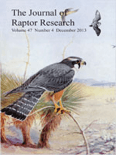
JOURNAL OF RAPTOR RESEARCH
Illuminating the Path for Raptor PreservationJOURNAL OF RAPTOR RESEARCH, published by Raptor Research Foundation Inc, serves as a pivotal platform for disseminating research related to the biology and conservation of raptors. Established in 1990, this esteemed journal has consistently contributed to the field of Animal Science and Zoology, securing a Q2 ranking in the 2023 category quartiles on Scopus, which highlights its significant impact and relevance. With an ISSN of 0892-1016 and an E-ISSN of 2162-4569, the journal presents an extensive range of studies aimed at promoting the understanding and preservation of these majestic birds of prey. Researchers, conservationists, and students alike will find invaluable insights and peer-reviewed articles that address current conservation challenges, ecological dynamics, and the latest methodological advancements in the study of raptors. Although not open access, the journal is integral for anyone dedicated to advancing the knowledge and appreciation of avian species in ecological and conservation contexts.

Asian Myrmecology
Innovating Ant Research: Bridging Science and ConservationAsian Myrmecology, published by University Malaysia Sabah, stands as a prominent platform within the field of myrmecology, focusing on the extensive research and study of ants and their impact on ecosystems across Asia. Established in 2008, this journal has become an essential resource, offering valuable insights into the evolutionary, ecological, and behavioral aspects of ant species, supported by its Q3 ranking in multiple relevant categories. With a commitment to open access, it aims to disseminate critical findings to researchers, students, and professionals, enhancing knowledge and fostering collaboration in the scientific community. The journal's scope, covering both ecological interactions and intricate systematics, is integral for advancing our understanding of biodiversity and environmental health in the region. By featuring original research, reviews, and case studies, Asian Myrmecology not only contributes to the academic dialogue but also strengthens the conservation efforts vital for sustaining ecosystems in Asia.

AUSTRALIAN JOURNAL OF ZOOLOGY
Fostering Knowledge for a Sustainable FutureAustralian Journal of Zoology, published by CSIRO PUBLISHING, serves as a premier platform for research in the fields of animal science and zoology, with a profound commitment to advancing our understanding of wildlife and ecosystems. Featuring an ISSN of 0004-959X and an E-ISSN of 1446-5698, this esteemed journal encompasses a wide range of topics relevant to ecology, evolution, behavior, and systematics. For the year 2023, it holds a commendable Q2 ranking in both Animal Science and Zoology and Ecology, Evolution, Behavior, and Systematics, demonstrating its significant impact within the academic community. With a rich publication history spanning from 1952 to 2024, the journal caters to researchers, professionals, and students by disseminating crucial findings and methodologies that contribute to effective conservation efforts and informed ecological practices. Although not an open access journal, it continues to foster collaboration and discussion among scholars in Australia and beyond. Located in Clayton, Victoria, the journal remains dedicated to its objective of enhancing knowledge in zoological sciences and addressing vital environmental challenges.
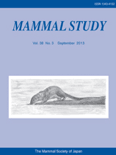
MAMMAL STUDY
Connecting researchers to promote mammalian science and ecology.Mammal Study, published by the Mammalogical Society of Japan, is a leading academic journal dedicated to the field of mammalogy and related biological sciences. Since its inception, it has provided a critical platform for researchers, professionals, and students to share their findings and insights into the diverse facets of mammalian biology, ecology, and conservation. The journal, with ISSN 1343-4152 and E-ISSN 1348-6160, is recognized for its rigorous peer-review process and has attained a commendable Q3 ranking in the 2023 category of Animal Science and Zoology. With an impact factor reflecting its growing influence—ranking 283 out of 490 in Scopus—we welcome contributions that advance the understanding of mammalian species and their habitats. While access to published articles is through traditional channels, the journal aims to reach an even wider audience by fostering greater awareness and appreciation for mammalian research and conservation efforts. The Mammal Study has converged years of insightful publications from 2008 to 2024, solidifying its position as a vital resource in the biological sciences.
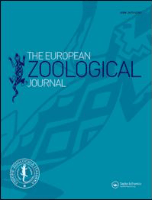
European Zoological Journal
Fostering Global Collaboration in Animal ResearchEuropean Zoological Journal, published by Taylor & Francis Ltd, is an esteemed open-access publication dedicated to advancing the exciting field of zoology. Since its inception in 2017, this journal has progressively established itself as a vital resource for researchers, professionals, and students alike. With its Q2 ranking in Animal Science and Zoology as of 2023, the journal ranks in the 69th percentile among its peers, showcasing its influence and contribution to the discipline. The journal’s broad scope covers a wide range of topics within zoology, aiming to foster an understanding of animal biology and conservation efforts. As an open-access journal, it not only enhances the dissemination of knowledge but also encourages collaborative research across global communities. Situated in the United Kingdom, the European Zoological Journal invites submissions that contribute to the evolving discourse in animal sciences, and endeavors to support the scientific community in addressing pressing ecological challenges.

ORNITOLOGIA NEOTROPICAL
Fostering collaboration in the study of avian diversity.ORNITOLOGIA NEOTROPICAL is a vital journal dedicated to advancing the field of Neotropical ornithology, published by the esteemed Neotropical Ornithological Society in collaboration with the USGS Patuxent Wildlife Research Center. With an ISSN of 1075-4377, this journal serves as a platform for researchers, professionals, and students to disseminate important findings related to avian biodiversity, ecology, and conservation in the Neotropical region. Although currently classified in Q4 quartiles for both Animal Science and Zoology and Ecology, Evolution, Behavior and Systematics, ORNITOLOGIA NEOTROPICAL has been gaining recognition since its inception in 2005. The journal promotes open discussions and rigorous methodologies that significantly contribute to the understanding and protection of avian species. By facilitating accessibility to cutting-edge research and fostering a collaborative scientific community, ORNITOLOGIA NEOTROPICAL aims to enhance the impact and importance of ornithological studies in the Neotropical domain.